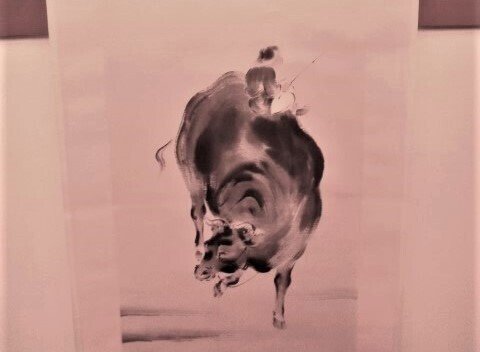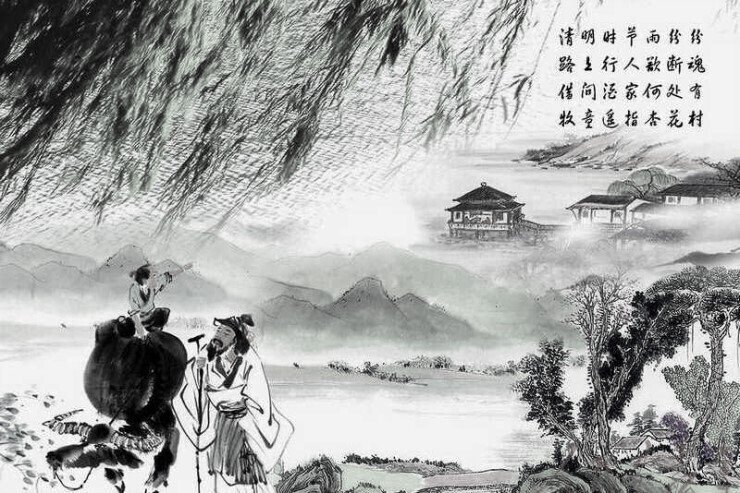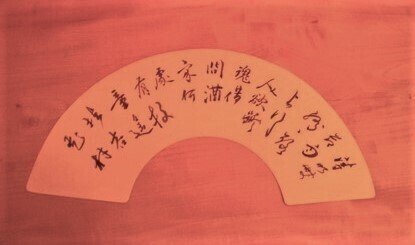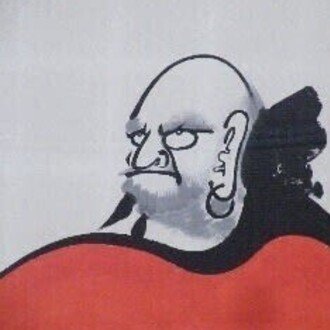
牛と牧童ののどかな情景に杜牧の「清明」があう。【一茶庵稽古追想】 Du Mu's "Qingming" fits the idyllic scenery of cows and Pastoral child.
「春」を表わす季語は数えきれないほどある。花や動物など自然界のものも多い。
春といえば誰もが思うのが「桜」。桜によく似た「杏」も春の季語としてよく使われる。そして、春を象徴するもので珍しいものがいくつかある。代表例が「牛」、そして「ブランコ」もそう。
牛は、その昔、春の農耕に欠かせない家畜として季語にも使われる。牛と言えば、春。あまり馴染みがないかも知れない。ブランコは、もっとピンとこない。ブランコはもともと中国の異民族が好んだ遊びで、春の遊びの一つだったようである。だから、ブランコと言えば、春をイメージさせる季語になっている。
There are countless seasonal words for "spring." There are many things in the natural world such as flowers and animals. When it comes to spring, everyone thinks of "cherry blossoms." "Apricot", which is similar to cherry blossoms, is also often used as a spring season word. And there are some rare things that symbolize spring. Typical examples are "cow" and "swing".
In the olden days, cows were also used in seasonal terms as livestock that were indispensable for spring farming. Speaking of cows, spring. You may not be very familiar with it. The swing doesn't come out more. The swing was originally a play favored by different ethnic groups in China, and it seems that it was one of the spring play. Therefore, when it comes to swings, it is a seasonal word that reminds us of spring.
稽古では春の象徴を、掛け軸(写真)を通して教えていただいた。
この牛の絵を見て、季節は、時間は、情景は、なにをしているところ? という問いが宗匠から投げかけられた。茶席では牛のお軸が掛けてあるのをよく見かける。茶席で見れば、もしかして「十牛図」と思うかも知れない。
牧童が牛を探し捕らえるまでの過程を描く十牛図は、代表的な禅宗的画題のひとつ。牛は心理、本来の自己、仏教における悟りを象徴している。十牛図は、すなわち本来の自己を探し求める旅、悟りへの道程である。
In the lesson, master taught us the symbol of spring through a hanging scroll (photo). Looking at this picture of a cow, the master asked the question, what is the season, the time, the scene, and what are they doing? At the tea ceremony, we often see cow shafts hanging on them. If you look at the tea ceremony, you might think of it as "Ten Bulls".
The Ten Bulls, which depicts the process of a pastoral child searching for and catching a cow, is one of the representative Zen Buddhist themes. The cow symbolizes psychology, the true self, and enlightenment in Buddhism. The Ten Bulls is a journey to find the true self, a journey to enlightenment.

宗匠はそんな堅い話ではなく、夕暮れ時に、牧童が牛に乗って家に帰るところですよ。
のどかな情景を想像するでしょ、と。
そう言われると確かに牛もひと仕事を終え、どことなく微笑んでいるように見える。
この絵は、"理想の世界"を描いている。儒教精神で言うならば、のんびりと豊かな社会を作ることにある。その象徴が、この絵で表現されている、ということのようだ。
The sect is not such a rigid story, but at dusk, a pastoral child rides a cow and goes home. You can imagine a peaceful scene.
When I was told that, the cow certainly finished a job and seemed to smile somehow. This painting depicts the "ideal world". In the Confucian spirit, it is about creating a laid-back and prosperous society. It seems that the symbol is expressed in this picture.
画と一緒に、今宵の稽古の題材に上がったのが中国で有名な漢詩、杜牧の「清明」ある。
Along with the painting, the subject of the lesson tonight was "Qingming" by Du Mu, a famous Chinese poem in China.
清明時節雨紛々
路上行人欲断魂
借問酒家何処有
牧童遥指杏花村
清明は花の季節であるが、雨が多い。
その季節を詠った詩である。
現代訳すると
Qingming is a flower season, but it rains a lot.
It is a poem about the season.
Translated into modern times.
清明の時節にしきりに降る雨。
雨の降りしきる道を、ひとりの旅人がゆく。
旅ゆく人の胸は、かえってさみしさにしめつけられる。
せめてこのさみしさを酒にまぎらわそうと、ちょっとたずねてみる。
居酒屋はどのあたりにあるのかね。
牛の背にまたがった牧童は、黙ったままゆっくりと指さした。
それは杏の花咲くかなたの村だった。
It rains constantly during the Qingming season.
A traveler goes down the rainy road.
The hearts of travelers are rather lonely.
At the very least, someone ask a little to try to mix this loneliness with sake.
Where is the izakaya?
The pastoral child straddling the back of the cow pointed slowly, silently.
It was a village where apricot flowers bloomed.

この画の賛に書くなら「清明」だろう。これしかない。
お軸の画を見ながら清明を唱和した。
その後にいただく玉露の味は、また格別なものであった。
If you write in praise of this axis, it would be "Qingming". only this one.
We sang Qingming while looking at the picture of the axis.
The taste of gyokuro after that was exceptional.

レポート & 写真 / 渡邉雄二 写真 / 杜牧の「清明」画像より転載 Reported & Photos by Yuji Watanabe
記事は、2012年12月に心と体のなごみブログに投稿したものを修正し転載。
いいなと思ったら応援しよう!

